It will not be a surprise if you are told that Indian Army Regiments use a particular insignia to represent themselves. But have you ever tried to know the meaning behind these symbol or maybe, why a particular insignia is assigned to a particular regiment? Each of the regiments have their colours, flags, battle honours, their rich customs, traditions, and rituals. These badges not only give soldiers an identity but a deep sense of belonging in their regiment.
Let’s have a look at the insignias of the brave regiments of Indian Army:
1. Brigade of the Guards
Brigade of the Guards is India’s first all-class-mixed infantry regiment which currently consists of 21 battalions
The regimental insignia of the Brigade of the Guards is a Garuda. It is a large mythological bird with eagle-like features that appears in Hindu mythology as the vahana of Lord Vishnu. Garuda is invoked as a symbol of impetuous violent force, speed, and martial prowess in Mahabharata and that is why it was adopted by the Brigade of the Guards as their insignia.
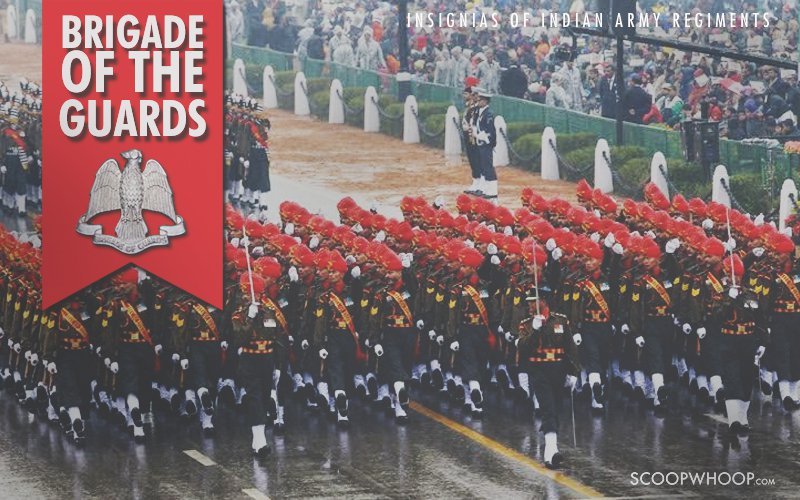
2. The Parachute Regiment
The airborne infantry of the Indian Army has an open parachute as their insignia
The regimental badge for the Parachute Regiment, an airborne component of the Indian Army, is an open parachute and wings are spread out from the circle with a dagger superimposed on the parachute and upper portion of the circle.
The special forces, which form part of the Parachute Regiment, have a distinct insignia called Balidaan.
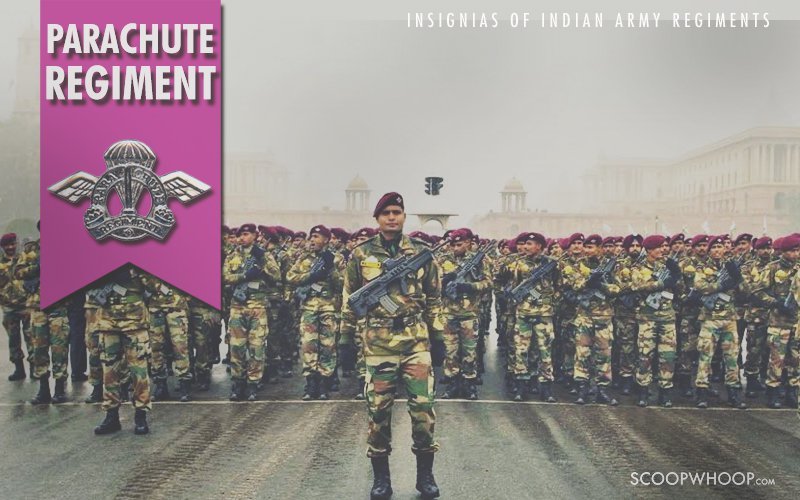
3. Mechanised Infantry Regiment
Mechanised Infantry Regiment is responsible to give infantry battalions greater mobility thus making BMP1 as their insignia
The regimental insignia of the Mechanised Infantry Regiment is a rifle bayonet mounted on the BMP1, depicting the infantry and mechanised facets of the regiment.
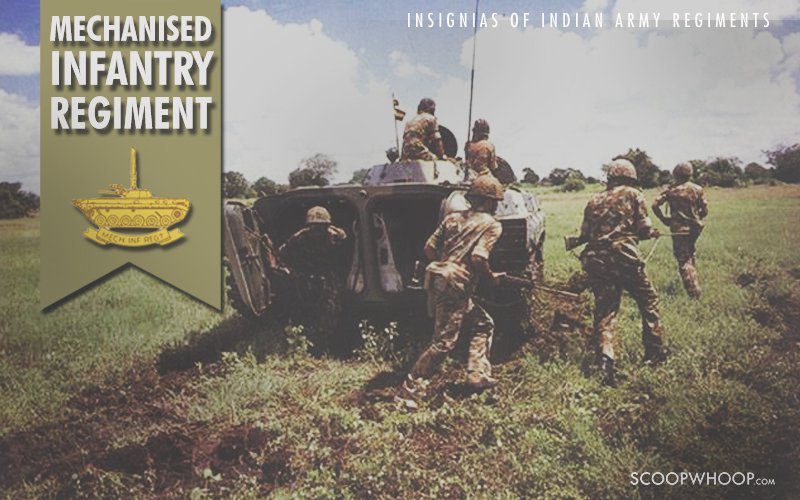
4. Punjab Regiment
The world’s only infantry with a naval symbol
Punjab Regiment is perhaps the only infantry in the world to adorn a naval symbol, a Galley with a bank of oars and sail, as a badge. It was awarded in 1824, in recognition of their readiness to serve overseas.
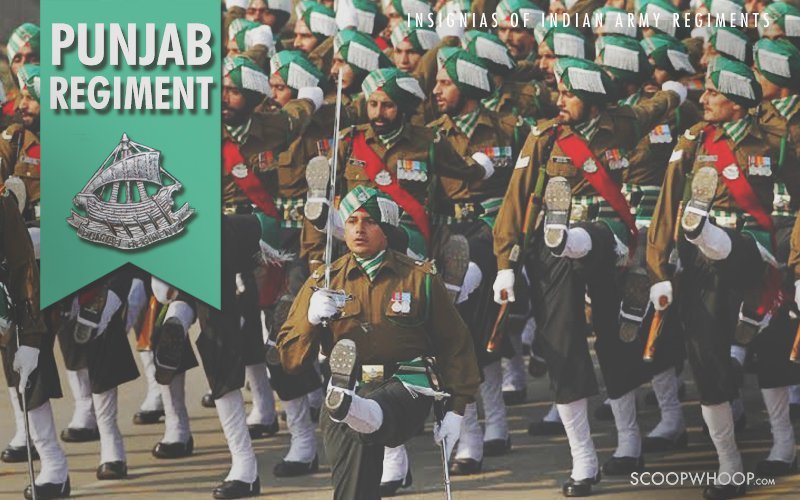
5. Rajputana Rifles
The medieval Rajput weapon, Katar which is distinctive for its H-shaped handle is included in the regimental insignia
This senior-most rifle regiment of the Indian Army has a medieval Rajput weapon, katar (dagger) and a bugle as their insignia. Katar was used by upper-class Rajputs as a weapon and was also meant to show their wealth and position.
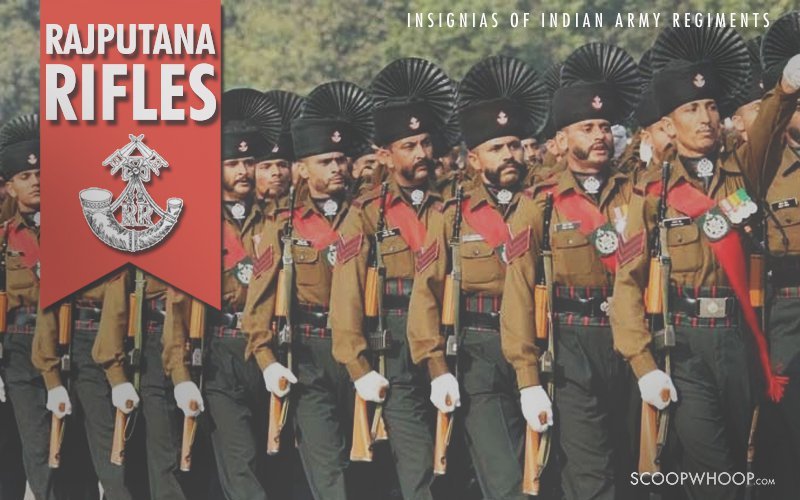
6. Sikh Regiment
Khalsa armies used a Chakra in combat which is now included in their regiment’s insignia
The insignia comprises the sharp edged quoit, or Chakra which the Khalsa armies had used in combat. The Chakra surrounds the lion which is symbolic of the name (Singh) every Sikh carries.
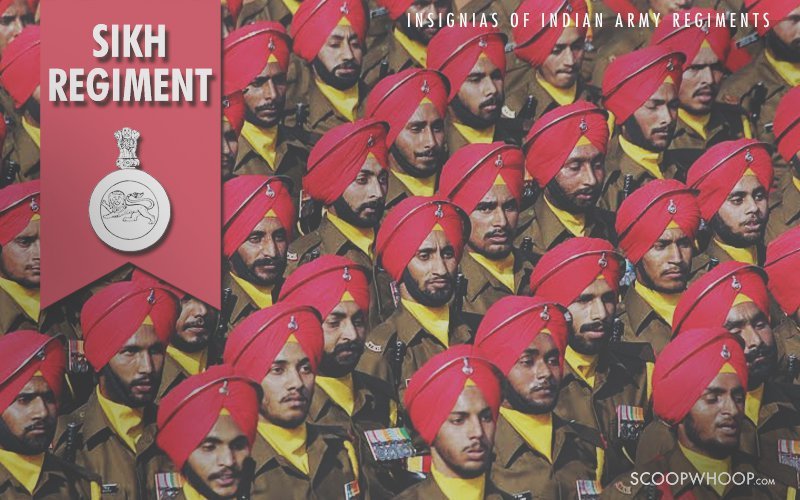
7. Madras Regiment
The Assaye Battle honour, an elephant emblem was awarded to the Madras regiment
In recognition of the fierce fighting capabilities displayed during the battle of Assaye, the insignia of an Assaye Elephant was awarded to the Madras Native Infantry and the same is worn on the belt by all ranks of the regiment to this day.
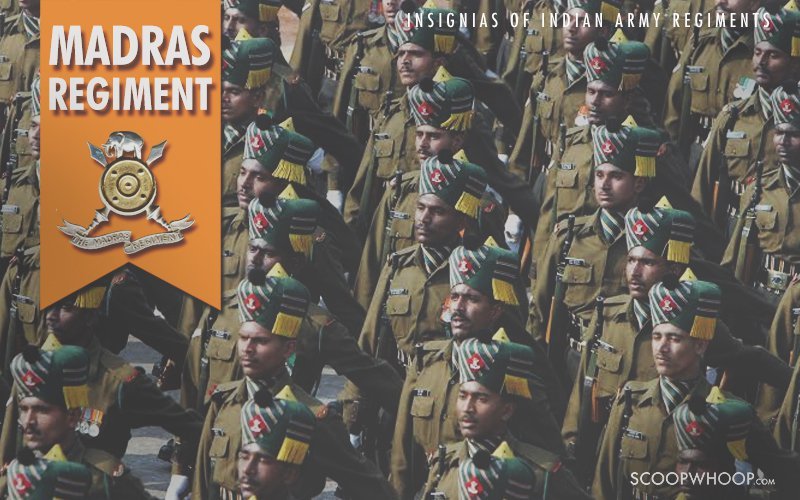
8. Maratha Light Infantry
This regiment’s mode of combat by skirmishers made crossed swords and a shield as their insignia
The Regimental insignia is a bugle and cords with a pair of crossed swords and a shield. They chose the bugle for their insignia, as it best represented the light infantry mode of combat by skirmishers, controlled by orders issued on the bugles. Skirmishers are infantry and cavalry soldiers stationed ahead or alongside a larger body of friendly troops
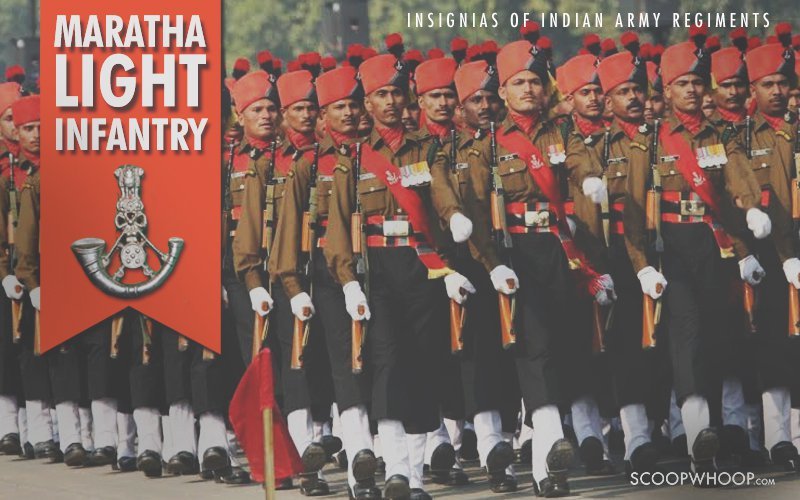
9. The Jat Regiment
The Regiment’s ninth position in the regimental hierarachy of the Army of the 1920s made Roman numeral nine as their insignia
The regimental insignia is the Roman numeral nine representing its ninth position in the regimental hierarchy of the Indian Army of the 1920s. The insignia also has a bugle indicating the Light Infantry antecedents of two of its battalions.
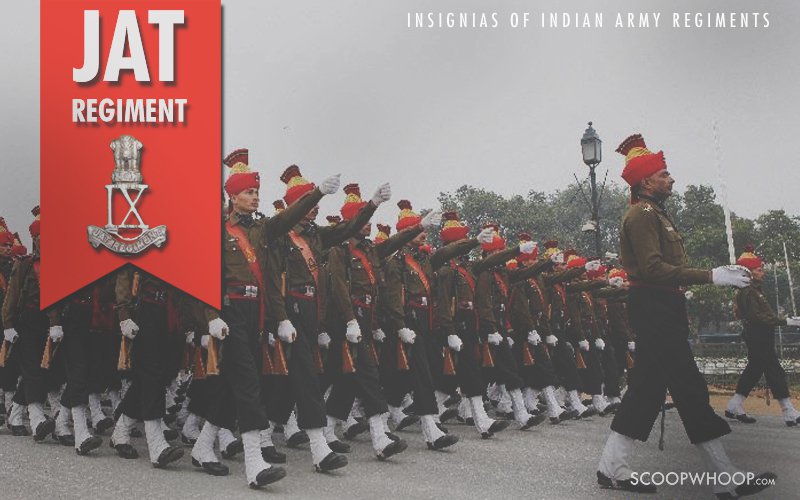
10. The Dogra Regiment
The Dogra Regiment pray to Goddess Durga at their regimental temple in North India
The regimental insignia is the tiger which is revered as the mount of Goddess Durga, who is a widely worshipped deity in the Dogra hills.
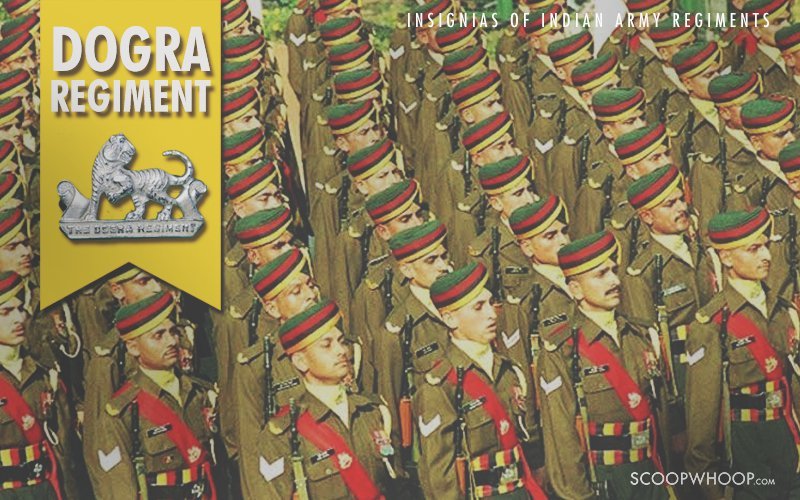
11. The Kumaon Regiment
To maintain a link with the past, the demi-rampant lion was adopted from the coat of arms of Russel’s family as the insignia of Kumaon Regiment.
The regimental insignia is the demi-rampant lion, which was adopted from the coat of arms of Sir Henry Russel’s family, whose ancestor had started the body of troops now formed into Kumaon Regiment.
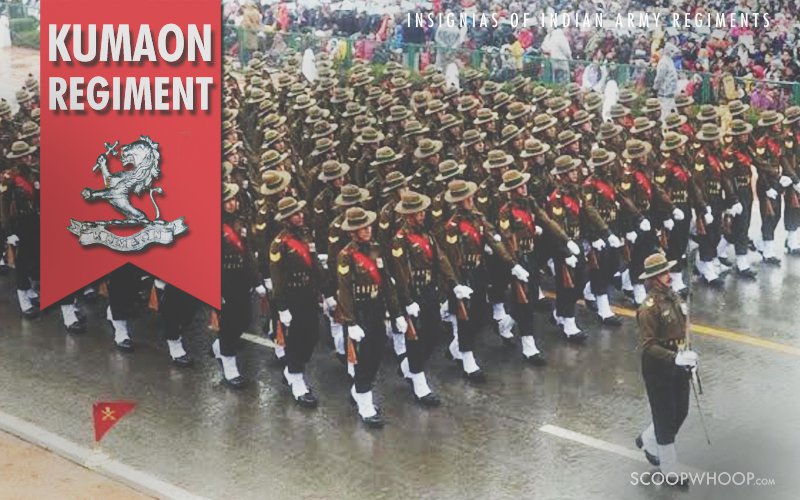
12. The Assam Regiment
Assam is considered to be the only natural habitat for one-horned rhinoceros in the world.
The regimental insignia is the one-horned Rhinoceros which is found in Assam and is a reflection of toughness, aggressiveness, determination and martial qualities.
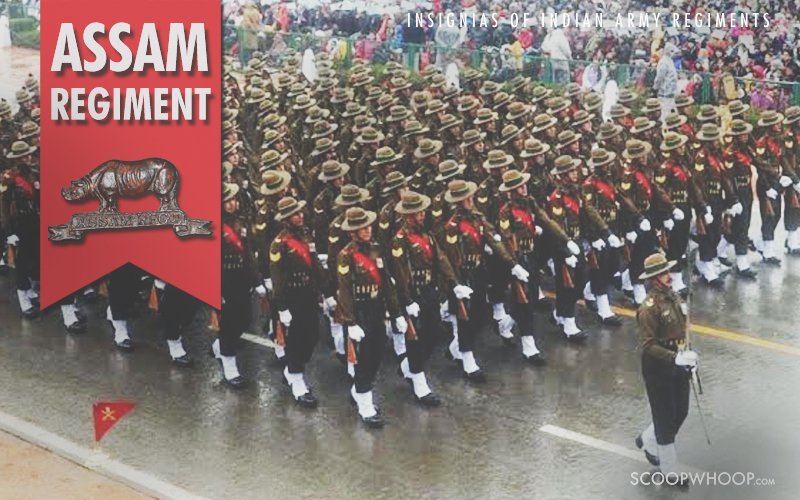
13. Bihar Regiment
The Ashoka Lion is of great importance to Bihar as their history is strongly linked to Ashoka the Great who ruled the Mauryan Empire
The regimental insignia is the Ashoka Lion. It was chosen by Habibullah Khan Khattak who was then the second-in-command of the Bihar regiment. On a visit to the Calcutta Museum, Khattak chanced upon the Ashoka Lions from Sarnath and found it suitable for the regiment because of its historical association with Bihar.
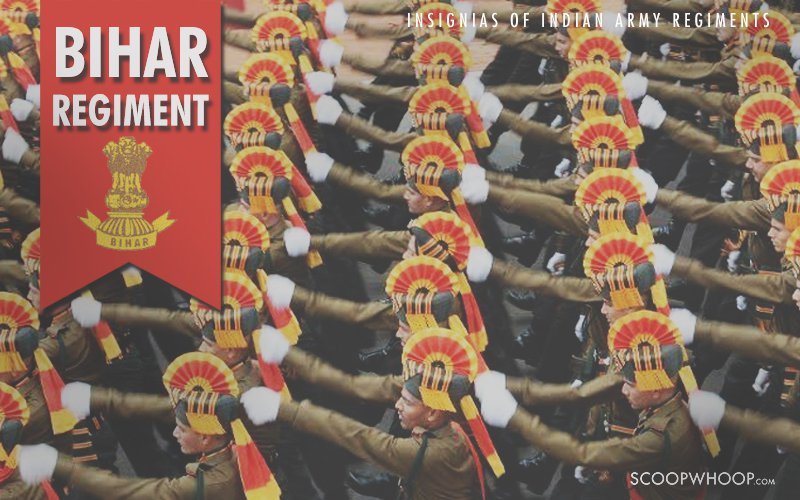
14. The Naga Regiment
The prestigious animal of north-east India, Mithun, is a part of the insignia of this regiment
The youngest regiment of the Indian Army, the Naga Regiment has the traditional Naga weapons viz the Dah, the Spear and their prestigious animal, Mithun as their insignia. In North-eastern states, especially Arunachal Pradesh, Nagaland, Manipur and Mizoram, owning of Mithun is considered to be an indication of social economic superiority of an individual in the society.
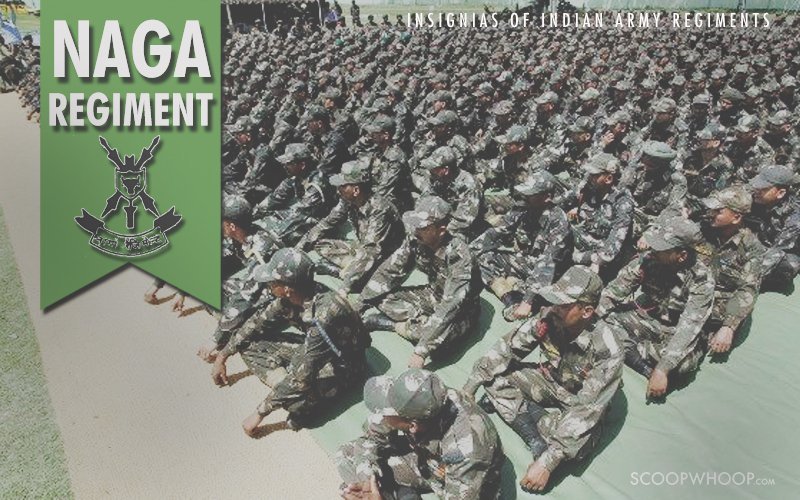
Because we do not know all the stories behind all the regimental insignias, we limited our list to fourteen.
If any of our readers have anything to add to these, we’d surely appreciate it!
Jai Hind!
Images designed by: Pavitra Paruthi

















